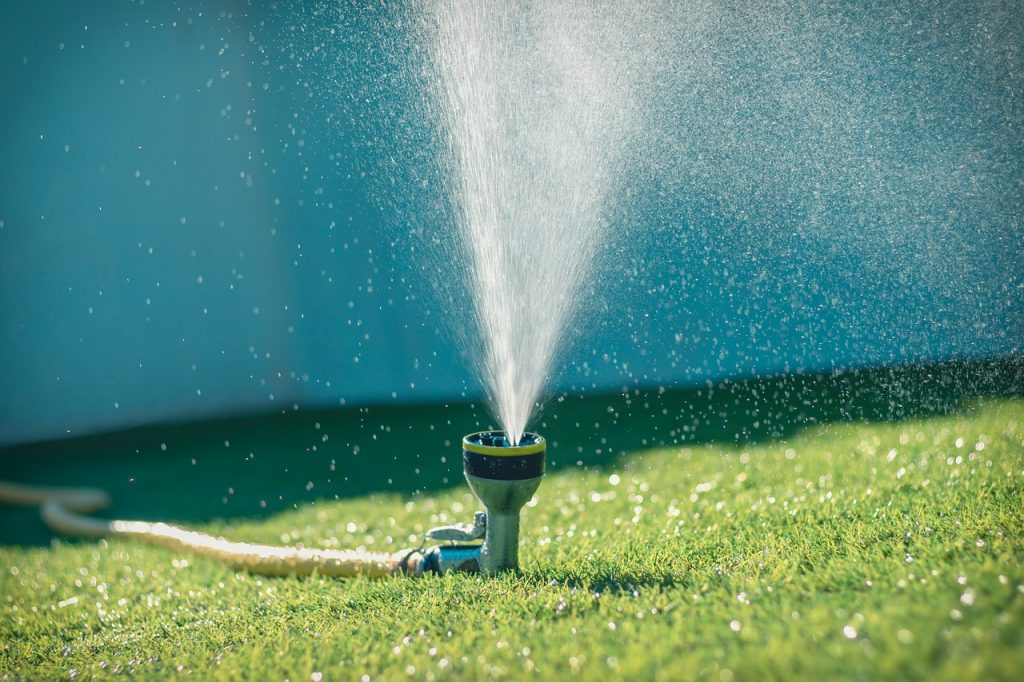Do you dream of a lush green, thick and healthy lawn near your house? Do you enjoy spending your free time in the garden? Follow these tips to improve the condition and appearance of your grass.
Not many people know that mowing your lawn regularly increases its lush growth. Besides, to improve the condition of the grass, it is a good idea to get rid of problematic and unsightly weeds. Once you’ve cleaned up the area, scatter grass seed on bare patches to make them germinate again. It’s also a great idea to store rainwater to use during dry summers. This will help prevent the grass from turning brown. In addition, you can also lift the turf with a fork to aerate trampled areas and bring them back to life. On the other hand, pull out dead plants in the fall to maintain a lush, luscious green turf
Mow your lawn at least once a week in the summer and once every two weeks in the spring and fall. Regular trimming encourages root spread, which will help fill in gaps and block weeds. In summer, increase your mowing height to about 10-15 inches. This will make your lawn less prone to browning even in dry weather, and you can mow less often. Keep your equipment in good condition – remember to sharpen the blades on your mower once in a while. A dull blade hurts your lawn by tearing grass blades instead of cutting them.
A young lawn needs watering, but don’t overdo it or you could lead to shallow rooting and poor establishment of the grass. If possible, use rainwater from a barrel. Remember that popular sprinklers are great for properly watering your lawn, but they use a lot of water. Also, don’t worry if the grass turns brown. It will green up again when the rains come

Dandelions have broad, flat leaves, so they can occupy large areas of your lawn and stunt its growth. Fortunately, you can easily get rid of them – just use a narrow spatula. This enables you to remove the rosette of milkweed leaves together with the roots. You can find a suitable shovel at the garden store. It is about 3 cm wide. You can also use a selective herbicide that combats dicotyledonous plants.
>> Read also: Hand fertilizing your lawn, establishing a seeded lawn
Sickle-leaf alfalfa, buttercups and clover also spread quickly on the lawn. So it’s worth raking the grass before mowing to give it a little lift. Over time, you will weaken the weeds and eliminate them
A lawn fertilized with chemicals usually has a very shallow root system because it gets most of its water and nutrients from above. Natural turf, on the other hand, draws them from the soil. In this case, a simple test is worthwhile. Use a trowel or shovel and cut a small piece of turf at least 10 cm deep. Now take a close look at what is above and below ground. Is the soil crumbly and soft? Does it contain a thick patch of healthy blades of grass and maybe one or two worms? If so, you have no reason to worry.
Worse if the turf sample is dry or compacted and the roots appear weak and shallow. In poor and/or biologically inactive soils, organic matter builds up on the surface and creates an ideal environment for disease. You can remove dead roots and stems by vigorous raking. Grass roots and soil microorganisms prefer loose, airy soils. Remember to aerate your lawn in spring. This will allow nutrients, air and water to better penetrate the soil. Use a manual or mechanical aeration tool to do this.
Apply fertilizer or lime (if necessary) immediately after aeration when the soil is exposed. Remember to conduct a soil test beforehand. Most grass varieties prefer a slightly acidic to neutral pH (6.5-7). This will tell you whether your soil needs lime to make it neutral or sulfur to acidify it.
If your soil and lawn are healthy, they probably don’t need extra fertilizer. However, if you need to, opt for organic formulations. They release nutrients slowly, providing long-term nutrition. You can also leave mulch behind after cutting the grass. This will provide nutrients and organic matter. When the mulch is too thick and wet, rake it up and compost it. You will apply it later. Chemical fertilizers can over-stimulate grass growth, making it more susceptible to disease and insects.